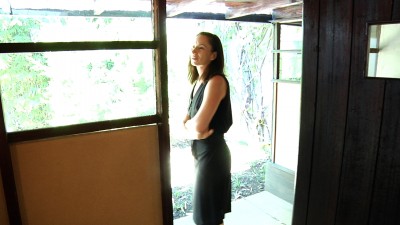How is it that I ended up creating two projects for the Schindler House? Two of only three that I have produced for presentation in Los Angeles, where I’ve lived since 2006. Isn’t that peculiar? Perhaps it’s only an accident: one exhibition was proposed by my old friend Simon Leung; the other conceived by the director, Kimberli Meyer. But I think there is some logic at work: a combination of the openness of the Schindler House as an institution and its capacity to inspire engagement.
The Schindler House is unlike any other museum I’ve dealt with. It isn’t the only historic house museum without a collection that develops contemporary art programs (Haus Lange and Haus Esters in Krefeld come to mind), but it is one of the few. Of course, one must say that the Schindler House is defined above all by its architecture. And yet it is an architecture that seems to defy its definition as a museum, at least a museum understood as a container of cultural objects. The openness, fragility, and permeability of the Schindler House render it almost immaterial in my mind: more a structuring of thought, movement, and experience than a containing space. Entering it for me is more like entering a vision than a building: a vision of home, of society, of the intermingling of public and private lives, bodies, and environments. It turns people into apparitions.
This is one of the things manifested by both of my otherwise very different projects for the Schindler House: It’s a beautiful house, isn’t it? (May I Help You?) (2011) and CCI Tehachapi at Kings Road (2014). Watching the video of It’s a beautiful house, I’m struck by the way the exterior of the house disappears, and my body into it, as if there is no existence outside of its walls. Or, perhaps, it is an outside to be transcended by or through those walls. That may be the promise of this house-vision that led me to end an otherwise somewhat cynical work on a utopian note, quoting Pauline Schindler’s description of a place “where people are poor and it doesn’t matter, or rich and are forgiven,” as I fade into the bright light of the kitchen door.

Andrea Fraser, It’s a beautiful house, isn’t it? (May I Help You?) at the MAK Center for Art and Architecture at the Schindler House. 1991/ January 5 – February 11, 2011. HD video, 18 minutes.
In stark contrast, CCI Tehachapi at Kings Road invokes the dystopian future of modernist architecture, where the poor are incarcerated and the rich oblivious and culpable. Rather than perform its permeability, the work extends the building’s concrete slabs to shut the outside out, and inside in, even if only with walls of sound. The audio, displaced from a high-security prison, reveals the preciousness and privilege of the house’s openness, and perhaps a tiny fraction of the horror of its loss.